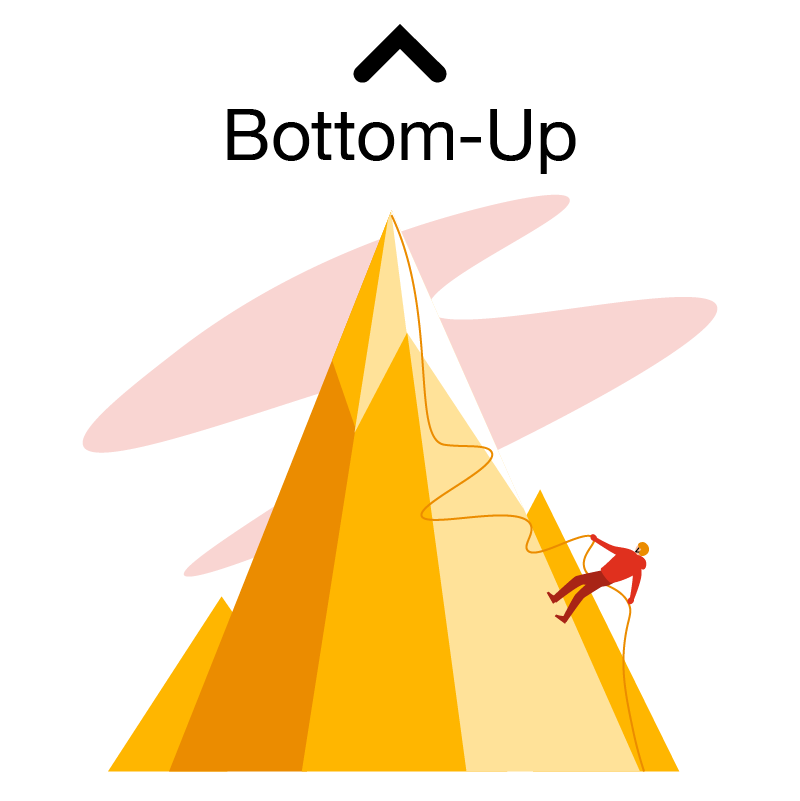{{item.title}}
{{item.text}}

{{item.text}}
After having read the first part of the article that explained the phenomenon of the planning fallacy and its negative impact on the outcome of projects (“Why do so many projects fail?”), it is worth considering how to estimate the time and resources needed to complete a project. This part will focus on what are the estimation techniques and how to choose them correctly for our project to avoid the pitfalls described in the first part.
When choosing an appropriate estimation technique, we should pay attention to several factors. It is very important to determine what kind of project we are dealing with and which management approach is the most appropriate in our case. The situation is different when the project is managed according to the traditional Waterfall delivery model, and different when we are dealing with Agile frameworks. Of course with most projects it is difficult to apply just one methodology in its pure form. Most often the project management teams implement a hybrid of various approaches.
In a traditional Waterfall project the planning phase occurs as soon as the project begins. Estimates should be adjusted during the project run as soon as new information becomes available, this will however trigger the need to revisit and adjust the initial assumptions regarding time and resources needed, because project scope change in Waterfall projects is not that easy, it should be controlled and documented. Each such change should be accepted by the designated decision makers, e.g. on the Steering Committee.
In such cases, the planning is primarily based on experience and data from previous projects as well as expert knowledge and parametric estimation (e.g. based on previous cases).
Agile projects use a more iterative approach to planning. Most Agile frameworks divide projects into iterations or sprints and in such cases the high level estimates regarding time and resources are to be done at the beginning, during the creation of the overall project plan (list of features and requirements), and then again during every backlog refinement meeting. Usually in the agile model the whole team is involved in the project planning, which has its advantages, but also poses some challenges. Because of the engagement of the whole team, the flow of information among the team members is very good, all team members feel involved, and this contributes to better coordination and builds a sense of ownership. However, for such planning you need a really good and stable team, one that is deeply committed to the project. Too much rotation within the team could interfere with the proper flow of information, and thus with the right planning1.
1 https://www.forbes.com/advisor/business/agile-vs-waterfall-methodology/
Despite the differences in various project management methodologies and models, each is based on one of the following estimation techniques:
Usually the time to complete a project is predetermined and divided into different tasks that need to be done within the project - typically based on a work breakdown.
The estimation of time and resources needed for individual tasks or phases within the project and, finally, adding-up of all of these elements.
Expert judgment is based on the experience of experts in the relevant field, their intuition and knowledge of trends.
Comparative or analogous estimation is based on data collected from previous projects with similar scopes.
Parametric estimating is also based on data from previous projects, but more focused on adjusting the data to reflect the differences found in each project.
Three-point estimating - is characterized by the fact that it assumes 3 scenarios: optimistic, pessimistic, and most likely2. The formula is to sum the most optimistic time assumption with the most pessimistic assumption, then to add them to the quadrupled most likely estimation, and then to divide this sum by 6.
A method that involves each member of the team, selecting cards numerically, reflecting the amount of commitment to each specific task, and then discussing them.
A method very similar to the planning poker, but here sizes from XS (extra small) to XL (extra large) are assumed instead of numbers.
2 Project Management Institute, “Project Management Body of Knowledge”, 7th Edition, Chapter 6/6.1, 6.4, Chapter 7
The essential thing to choose the right project management methodology and then the most appropriate estimation technique, in order to avoid falling into different traps, is experience and knowledge. Each of the methods described has its advantages and disadvantages, sometimes some will prove to be the answer to a specific project need, while at other times a mixed approach will be necessary.
The easiest way to fall into the trap of planning fallacy is to choose the wrong tools for planning and project management. On the other hand, even an experienced project manager can fall into the trap of planning fallacy if he or she does not have access (within the team or within the organisation) to adequate knowledge of the individual elements of the scope of their project. In such cases, many decisions are made by trial and error, as lessons learned from previous, analogous projects are not available, and knowledge of the latest trends and tendencies in the organisation is also scarce.
The best way to avoid falling into all the traps described in the whole article, including the planning fallacy, is to engage a team of experts experienced in selecting appropriate methodologies and estimation techniques for the project. The PwC PMO team also supports a holistic approach to the entire project portfolio and can therefore help or advise not only on individual projects but also on larger business transformations or programmes.
At PwC, we are committed to building a multilingual team of professionals with diverse backgrounds who can support our clients on projects in a wide variety of sectors.
Are you interested in topics related to project management? Subscribe to our newsletter and stay up to date with the latest knowledge in this area.
{{item.text}}

{{item.text}}
Marysia Lachowicz












